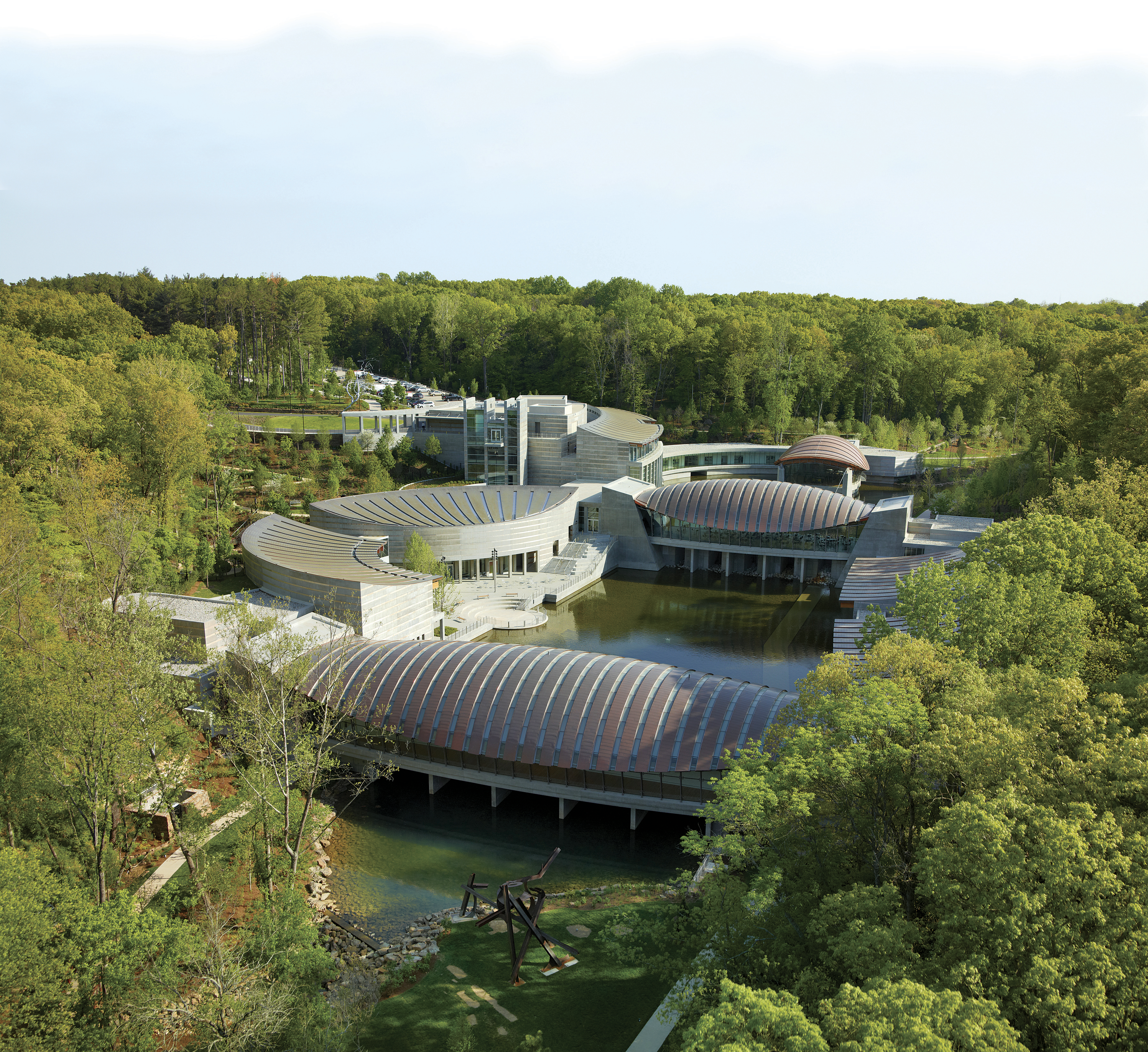
01 Dec Crystal Bridges Museum of American Art
RISING OUT OF THE WATER LIKE GIANT ARMADILLOS FROM A SCI-FI MOVIE, the modern pavilions of the Crystal Bridges Museum of American Art stand in stark contrast to the rustic wood barns that pepper the Arkansas landscape. Since its opening in late 2011, critics and visitors alike stand amazed by the museum’s striking architecture and monumental collection with treasures by Georgia O’Keeffe, Norman Rockwell, Jackson Pollack and many more. A-listers from Bill Clinton to actress Drew Barrymore to political pundit Arianna Huffington, plus international guests, have paid homage to America’s newest cultural icon.
In the museum’s first year, officials crossed their fingers, hoping to attract 250,000 visitors. Instead, they greeted more than 604,000. Last summer, Crystal Bridges celebrated its one millionth visitor. Who would have thought that an $800 million, world-class museum would wind up in the middle of the rural Ozarks?
For founder and philanthropist Alice Walton, the decision to build Crystal Bridges in her hometown of Bentonville, Arkansas, was easy. Walton, one of the richest women in the world, with a net worth of $18 billion, is the daughter of the late Sam Walton, the founder of Walmart. According to Executive Director Rod Bigelow, “People around here were exhilarated by the thought of having this. For Alice, it was a natural. She didn’t give it a second thought.”
Now in her 60s, Alice grew up near the 120-acre property, riding ponies and hiking the bucolic woods. She and her three older brothers played hide-and-seek among the trees. According to Alice, her mother enjoyed watercolor painting in the kitchen and gave Alice her first paint set when she was a child. That act launched a lifelong love of art and art collecting.
When she was 10, Alice acquired her first Picasso — or rather, a dime store reproduction of Picasso’s Blue Nude painting. By the 1990s, she had quietly amassed a significant collection, and in her head the wheels began turning. Walton’s desire was to share her love of art through the gift of a high-quality art institution to low-key Bentonville. In 2005, she led the charge to create an American art museum like none other.
With $800 million in backing from the Walton Family Foundation, Walton hired the best. The heiress — named one of Time magazine’s “100 Most Influential People in the World” in 2012 — tapped internationally renowned architect Moshe Safdie. His resumé includes signature landmarks such as the Skirball Cultural Center in Los Angeles, the Yad Vashem Holocaust History Museum in Jerusalem and the Harvard Business School. Together, Alice and Safdie crisscrossed the country visiting museums for inspiration.
When Crystal Bridges opened on 11/11/11, the facilities overflowed with visitors, many museum newbies. According to the very private Alice in an earlier interview, the vision was always to “provide access in an underserved area.” Walmart underwrites all admission fees so entrance is free. There is a small charge for travelling exhibits, however. Says Bigelow, “The sponsored admission has value to people. Everyone is so grateful to Walmart, and when you see that some communities might not be able to afford it during tough times otherwise, this makes a huge difference.”
Sequestered from street views, the attraction is easy to miss if you overlook the signage. The jaunt to the entry point is a tree-lined journey, not unlike the ripple of an Ozark ravine that descends into a creek fed by a natural spring. Amid sculpture groves and perfectly groomed trails, a 200,000-square-foot museum just “happens” to be there. To access galleries, the public descends another 80 feet below via stairs or elevator.
The name Crystal Bridges is derived from the local Crystal Spring and the pavilions that serve as bridges over the ponds.
When guests arrive, necks arch and eyes fly upward. Near the lobby, the grand Crystal Bridges’ Eleven restaurant features a breathtaking, vaulted barrel ceiling. The wave of curved wooden ribs perched on panes of clear glass make diners feel as though they are inside the belly of a whale.
Floor-to-ceiling windows comprise the museum’s many walls. Sunlight streams through, and visitors can observe the connection between the natural and manmade as they gaze upon adjacent pavilions, the ponds and, if they are lucky, turtles.
“From the outset, we aimed to design a museum in which art and nature are experienced simultaneously and harmoniously,” remarked Safdie. Tan-colored cedar bands on the buildings’ exterior will eventually turn into a silvery gray and the copper rooftops will become green, mimicking nature. Much care was taken to make sure that the museum’s design of concave and convex roofs and curvaceous buildings blend into the lush surroundings of dogwood, walnut, pine and beech trees.
During construction, when two of the large tulip poplar trees were slated for removal, Alice Walton could not bear the thought and had the design altered so that they could stand untouched. Today, these trees — known as Thelma and Louise — can be seen from the cafe window, and are immortalized as the logo for the Eleven cafe.
Erecting the superstructure did not come without challenges. Constructing the three buildings that would hover over water was an act of engineering prowess. Since the roofs were arched and so very long, a steel cable system was implemented using suspension bridge technology, explains Bigelow. These rugged steel cables loop through the roof and anchor to the ground below with concrete blocks at the base. The pairs of cables have been calibrated for strength and literally hold up these buildings.
Another massive accomplishment was the development of the ponds. The buildings were first constructed and pillared on dry land. Combining civil engineering and structural engineering smarts, the water from the upper creek was diverted to form the two ponds as they exist today. Water flows under several buildings. In its current state, a total of 3.6 million gallons is maintained and used to water the property. The landscape has been designed to handle a major flood. At any given time, the height of the water will stay within 3 to 4 inches and will not overflow.
Interplay between artificial light and natural light brings the architectural marvel to life. At night when special events take place, the lights make the buildings glow and appear to almost pulsate. In the day, the shadows and reflections create a light show. Window walkways visually cleanse the palette between each gallery.
Scott Eccleston, director of facilities and grounds at the museum, notes that Alice is as passionate about the gardens and pathways as she is about the buildings. “Alice wanted this place to be one of beauty and seclusion,” he says. “She would walk around carrying an axe [to clear brush] and [was] determined to make it right.” Today the hiking and biking trails are lined with native plants and dotted with sculpture.
To date, Crystal Bridges provides 50,000 square feet of exhibit space in eight interconnected buildings. It features Colonial, 19th century, Modern and contemporary art. The works of Andy Warhol, Andrew Wyeth, Mary Cassatt and many others span 500 years of history.
In total, the museum has a collection of 2,100 objects and displays 450 pieces at one time. As many as one-fifth of the works come from Alice’s private collection. One on view is Asher Durand’s Kindred Spirits, an oil painting from the New York Library, acquired at a reported auction price of $35 million, the highest amount ever paid for an American painting. The oil depicts two men looking over a mountainous panorama.
And then there are the more well-known paintings such as Rosie the Riveter by Norman Rockwell and Dolly Parton by Andy Warhol.
Sensitive to a community that has not had local access to a major art institution, Alice insists the staff and volunteers be as friendly and inviting as possible. Notes Bigelow, “Every day we meet people who have never been to a museum before. Alice wanted to ensure that there would not be anything off-putting or scary to anyone walking through the doors.”
Something is definitely working. The museum is so popular it attracts at least 1,000 people daily and swells to as many as 5,000 during travelling exhibits. It is a bustling, active space, replete with parents pushing strollers, couples on dates and elementary school groups on field trips.
More than a park or museum, Crystal Bridges has become a welcoming focal point for the community. Looking to provide access points where people can engage, Crystal Bridges staffs a plethora of classes, events and services, both inside and out: concerts on the lawn, outdoor yoga classes, cooking demonstrations, drop-in drawing nights, kids’ summer art camps. Folks are allowed to picnic, and little kids can be seen taking a refreshing wade in the creek. Inside, anyone can check out an iPod Touch for free to listen to an audio commentary on the exhibits.
The first year alone, the museum sponsored 1,500 programs. The site averages about 100 programs each month. One of them is tailored for preschoolers, allowing them to explore art and play with peers. A college ambassador’s program encourages students to become part of a team to discuss what activities would make Crystal Bridges relevant to their age bracket.
The ever-popular Wednesdays Over Water, or WOW, takes place one Wednesday a month. The director of culinary, Case Dighero, leads an exploratory evening of food as related to art. During the Norman Rockwell special exhibit, he sponsored a WOW meeting with Rockwell-inspired comfort foods such as beef stroganoff and discussed the exhibit, with samples of food and beverages, with a PowerPoint presentation showing Rockwell paintings.
“Something is always happening,” reports Bigelow. “Last Friday night I participated in three activities here — wine tasting on the landing, live jazz in the restaurant and then I went outside, and there was a Hispanic band and a taco truck and free salsa dance lessons.”
Crystal Bridges has attracted so much buzz that the state of Arkansas is touting itself as a cultural destination. In Little Rock, the Clinton Presidential Library pays homage to the life and career of Bill Clinton. The historic Arkansas Arts Center, also in Little Rock, is rife with famous installations including works from Picasso and Rembrandt.
But Crystal Bridges is the crown jewel of Arkansas museums, surpassing its own expectations for non-Arkansas guests. Over 40 percent of the visitors hail from outside the state. It is becoming The Reason visitors come to Arkansas.
The economic ripple effect has paid off. In 2013 the trendy 21C Hotel opened within walking distance of Crystal Bridges. The 21C showcases eye-popping 21st-century art in every guest room, and even in the gym, patios and conference rooms. New gourmet restaurants and galleries have opened doors in downtown Bentonville.
In the nearby town of Fort Smith, January 2013 marked the month this working-class community showcased its own cultural slice of pride with the Fort Smith Regional Art Museum. A surprising 500 visitors packed the museum on the inaugural preview night.
The flurry of interest in the arts since Crystal Bridges opened is emboldening Little Rock’s Anita Davis, a patron of the arts, to launch ESSE Purse Museum, the first of its kind in the country. Hoping to revitalize the Little Rock district known as SoMa, she says the 100 years worth of purses will tell the story of women in the 20th century.
In the meantime, Crystal Bridges thrives and helps others to thrive as well. The 8,000 households that purchased memberships is astounding for a town that has only 35,000 residents. “We must make sure it continues to be a success,” says Bigelow. “It’s wonderful to see such a community connection, and people do feel it is their museum. People already have their favorite paintings, and they feel comfortable doing yoga on the lawn.” Today, more than half the visitors are repeat guests. Several have returned more than 10 times since its opening less than two years ago.
The most gratifying thing for Bigelow is creating the opportunity to engage people in the Crystal Bridges experience and to share the American spirit with those from here and abroad.
Alice has often told reporters that “Crystal Bridges’ mission and vision emphasizes the belief of the power of a great museum’s ability to transform individuals and communities. I think we’re doing that.”
- The museum pulsates with light and life at evening concerts, lectures and in the museum restaurant, shown here. Photo: Timothy Hursley
- Glass walkways between galleries treat visitors to garden sculptures. Photo: Timothy Hursley
- Oak flooring and pine ceilings were built using native Arkansas wood. Photo: Timothy Hursley
- The stunning gift shop’s curvaceous motifs mirror the museum exterior. Photo: Timothy Hursley
- Ribbed ceilings and curved walls represent the architectural prowess of the renowned architect, Moshie Safdie. Photo: Timothy Hursley
- Asher Brown Durand, “Kindred Spirits” | Oil on Canvas |44 x 36 inches | 1849 | Photography by The Metropolitan Museum of Art
- Norman Rockwell, “Rosie the Riveter” | Oil on Canvas | 52 x 40 inches | 1943 | Image courtesy of The Saturday Evening Post
- Andy Warhol, “Dolly Parton” | Synthetic Polymer and Screen Print on Canvas | 42 x 42 inches | 1985 | Photography by Robert LaPrelle © Photography by Edward C. Robison III






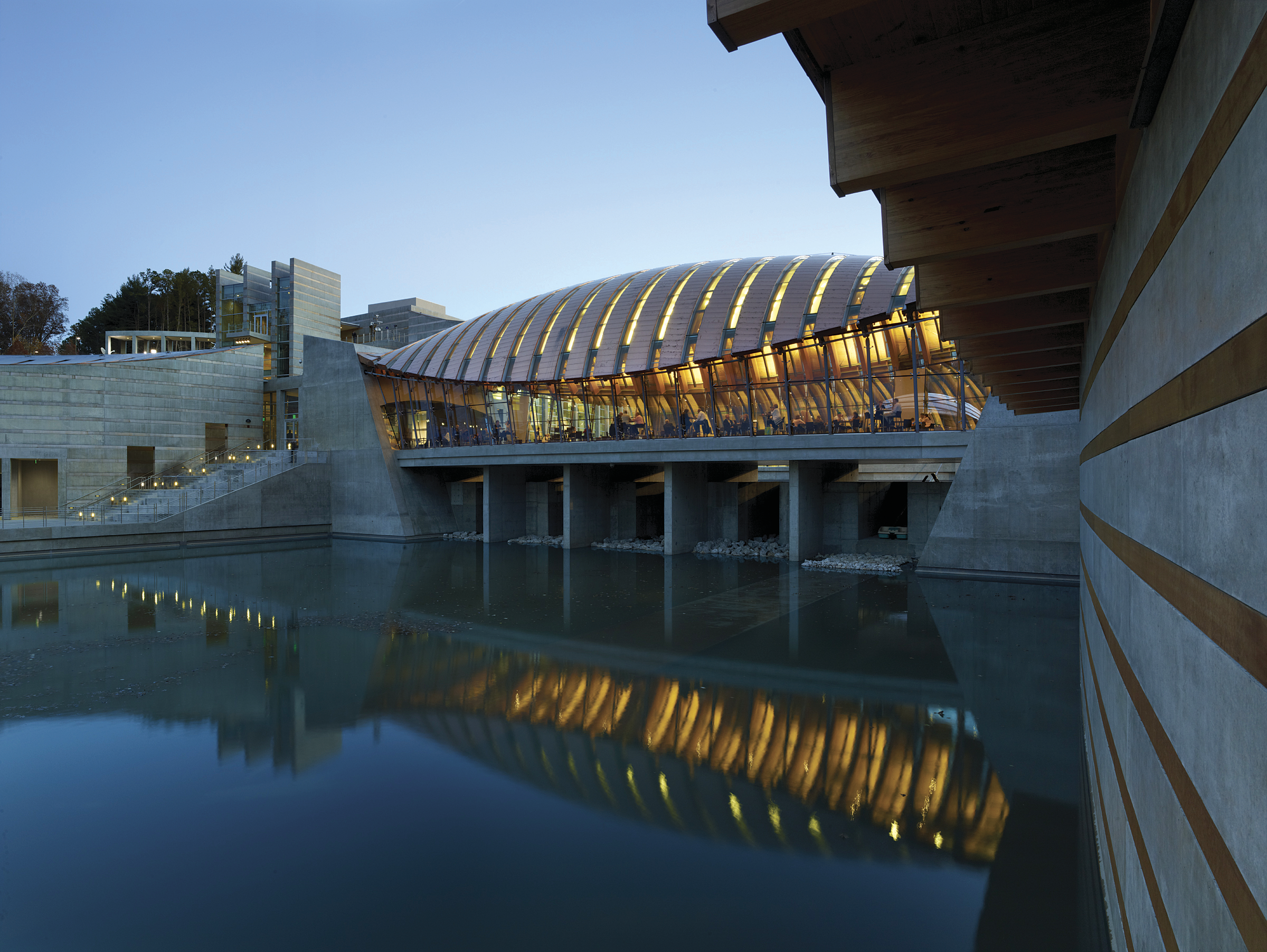
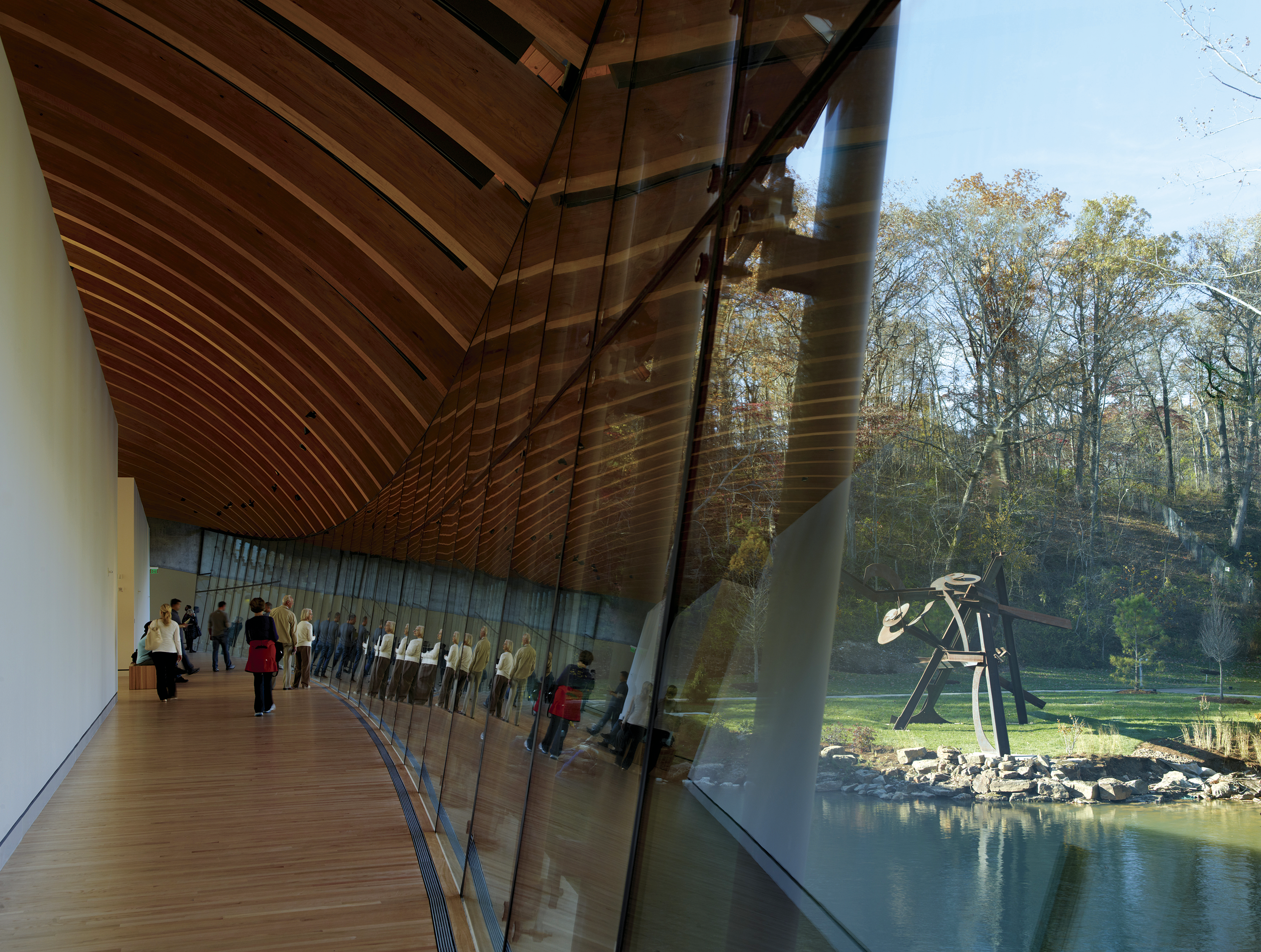
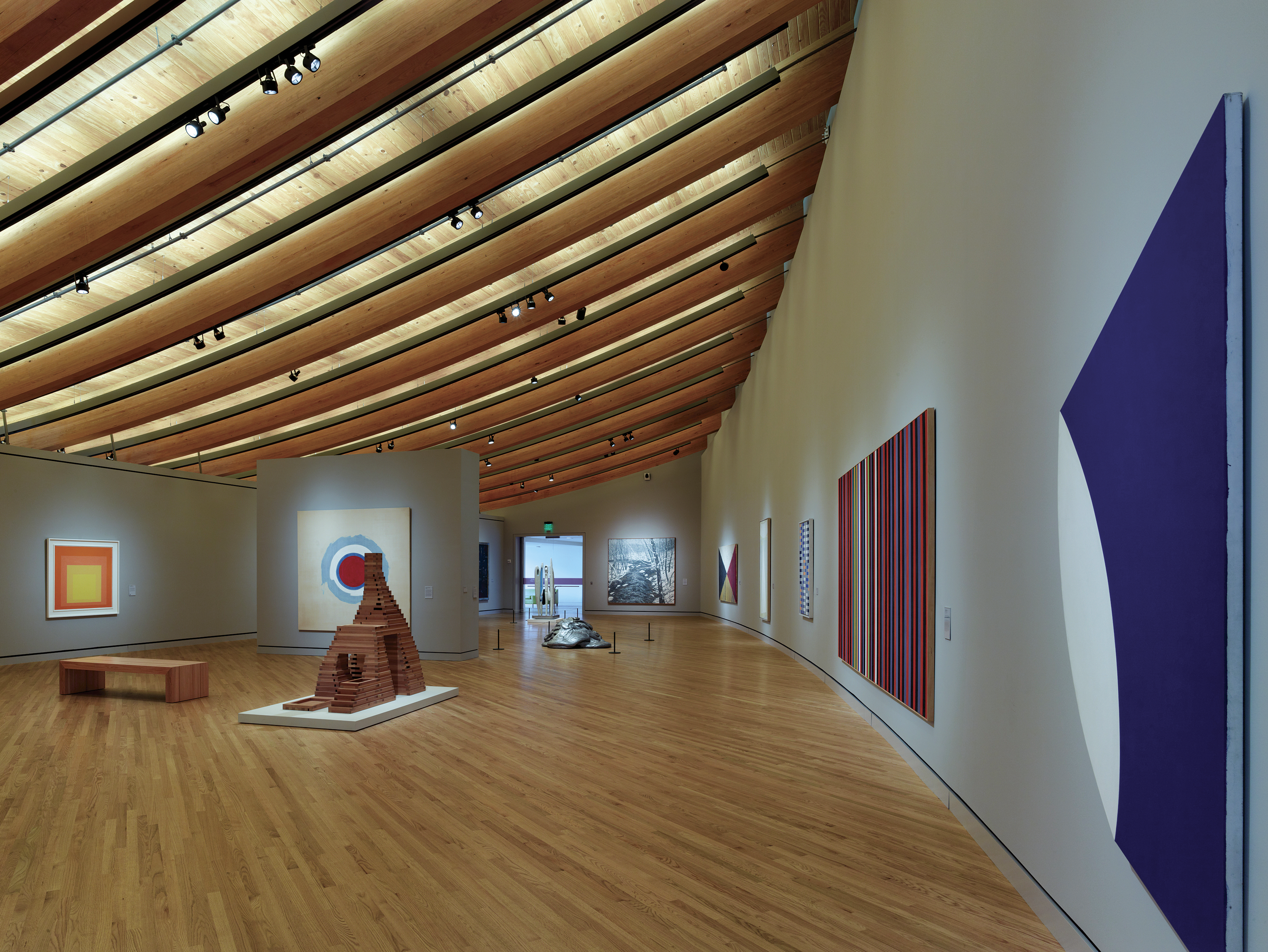
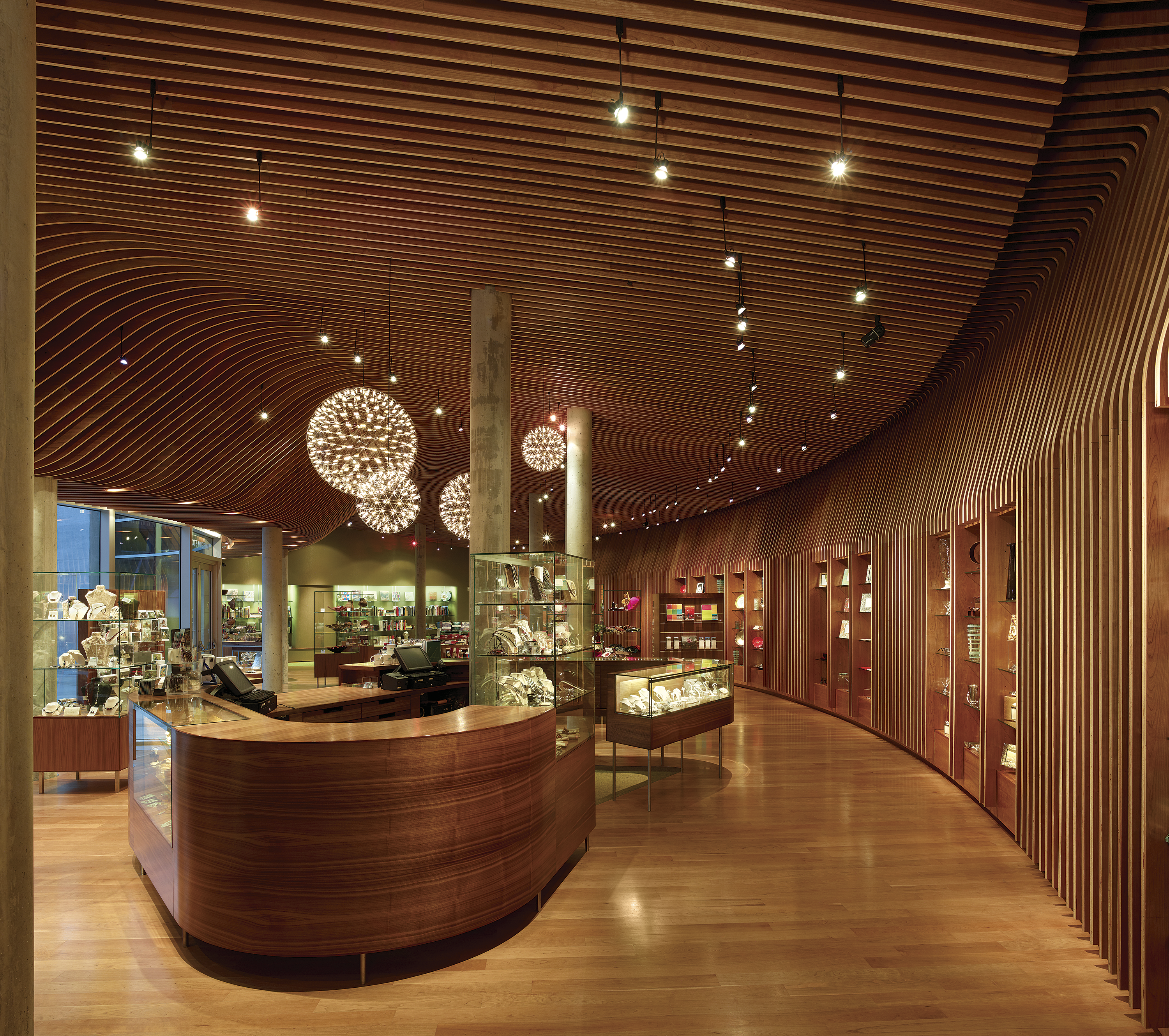
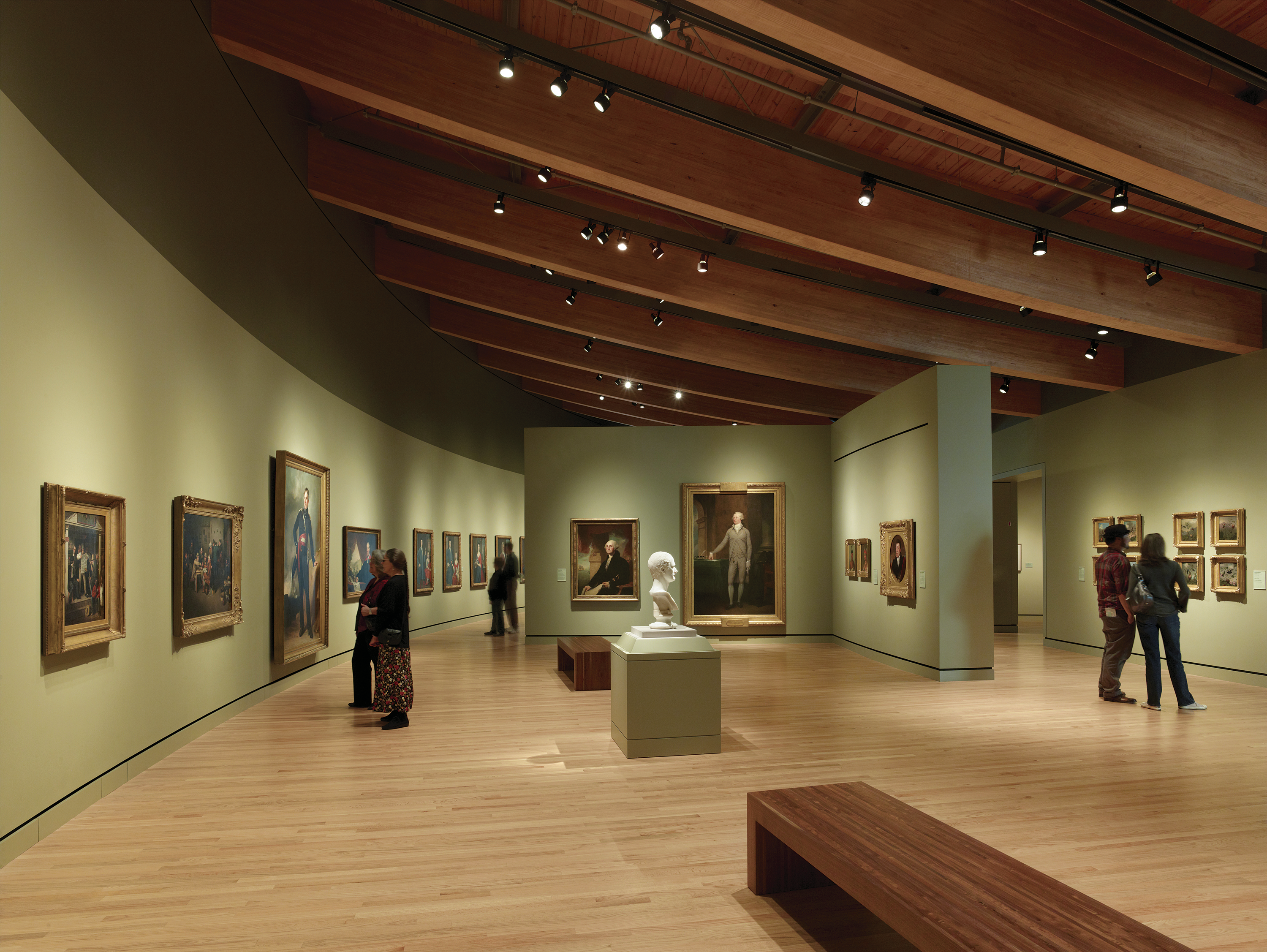
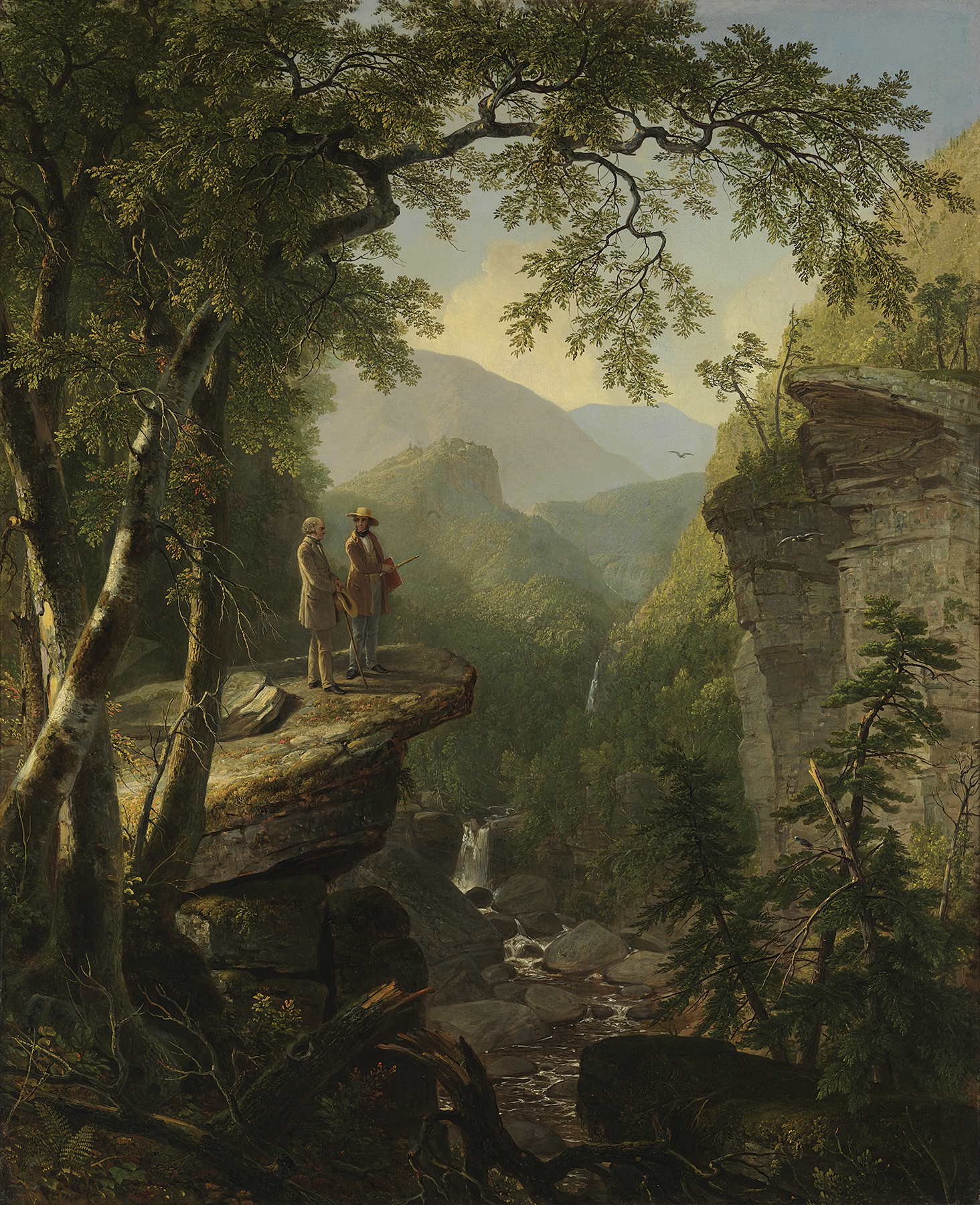


No Comments